-
Iwan Baan is an architecture and documentary photographer whose work can be regularly found in journals like DOMUS, a+u, Abitare, The New Yorker and the NY Times. Baan has worked with numerous architects including Rem Koolhaas OMA, Herzog & de Meuron, Toyo Ito, SANAA and Steven Holl. Baan recently published BRASILIA-CHANDIGARH: Living with Modernity with Lars Müller Publishers, and is currently working on publications about Caracas, Tokyo and Baku with Urban-Think Tank, Atelier Bow-Wow and Harvard, respectively. He has been curating, documenting, and collecting spaces from all over the world, revealing the role of architecture in contrasting urban, social and economic settings.
www.iwan.com
The Lookout Point by Swiss-based HHF Architects, completed 2011.
RUTA DEL PEREGRINO
Iwan Baan’s impressions of Mexico’s most famous pilgrimage route
Interview by Florian Heilmeyer
Photos by Iwan Baan
-

The Ruta del Peregrino is said to be the most traveled pilgrimage route in Mexico. It seems that every child in Mexico knows about the 117-kilometer-long route in the southwestern province of Jalisco. For over 200 years, pilgrims have come during Easter Week to journey from Ameca up to the Cerro del Obispo, then over the Espinazo del Diablo Mountains (the so-called “devil’s back”), and finally down into the little town of Talpa de Allende. It was in this town that a church was built in 1782 around a statue of the Holy Virgin of Talpa, renowned for performing miracles and relieving suffering and fear. This belief was appropriated by Christian missionaries from a significantly older practice – the Aztecs had asked their goddess Cohuacoatl for help at this same spot.
Since the construction of the church in 1782, the number of pilgrims has increased steadily; nowadays about two million people come each year, ranging in degree of devotion. They teem like ants in the short period around Easter, over the dusty streets and through the little villages. Everywhere there are tarpaulins hanging between the trees, colorful plastic chairs are set out, and people sleep wherever they can find shade. For a brief time these otherwise neglected and desolate areas along the route are turned into a noisy and lively path of celebration.
The provincial government decided in 2008 to improve the infrastructure along the Ruta del Peregrino. Dellekamp Arquitectos from Mexico City developed a master plan that “complemented and enhanced” the existing route and “accentuated its relationship with the landscape.” Seven architecture firms and artists were then invited to design nine sculptural buildings at different locations along the route. These structures were designed for resting, praying, or meditating – as viewing points, stopping and starting places, or for staying overnight. Dellekamp Arquitectos also designed two of the buildings. The other designers include the Mexican offices of Tatiana Bilbao, Luis Aldrete, and Pereférica, the Swiss offices of HHF Architects and Christ & Gantenbein, the Chilean office Elemental, and the artist Ai Weiwei from Beijing.
Dutch photographer Iwan Baan has been documenting these unusual projects since 2010. We met the ever-traveling photographer at a short stop in Berlin. -

The Ruta del Peregrino stretches over 117 kilometers from Ameca (to the right) to Talpa de Allende (to the left). Since 2010, nine sculptural buildings have been realized along the route.
-
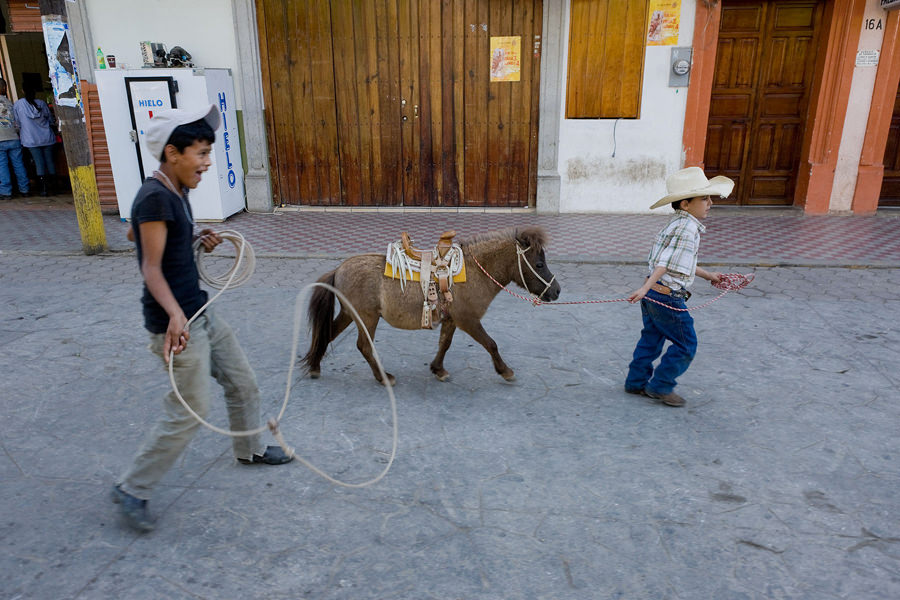
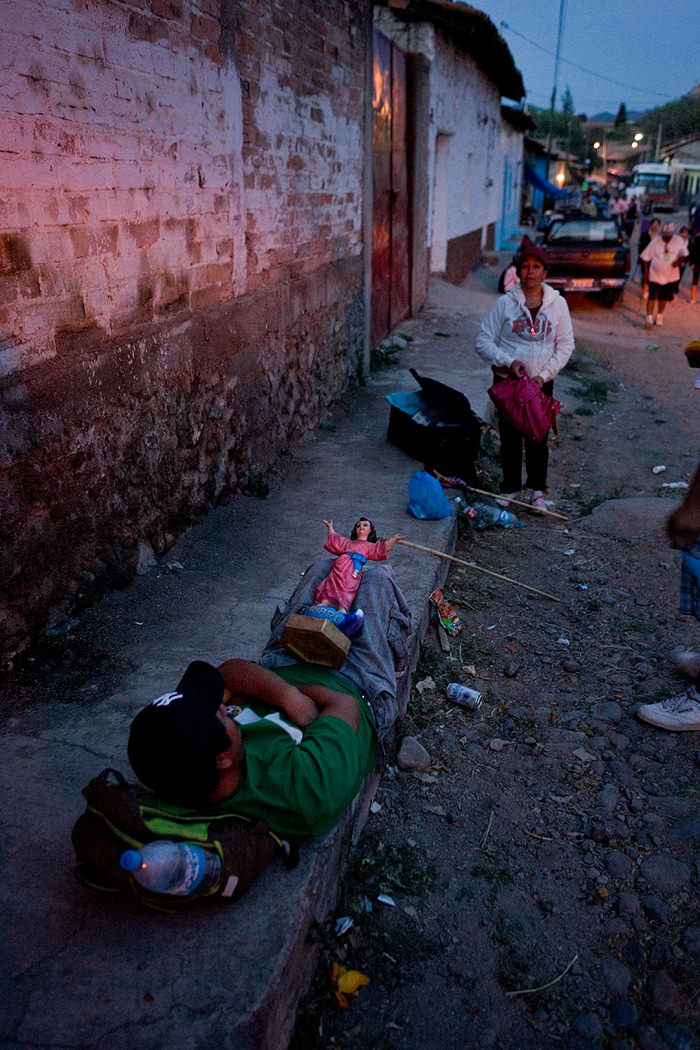
“It's like a great festival – people come from all over Mexico, and many travel these distances along with their entire families,” says Iwan Baan who documents the Ruta since 2010.
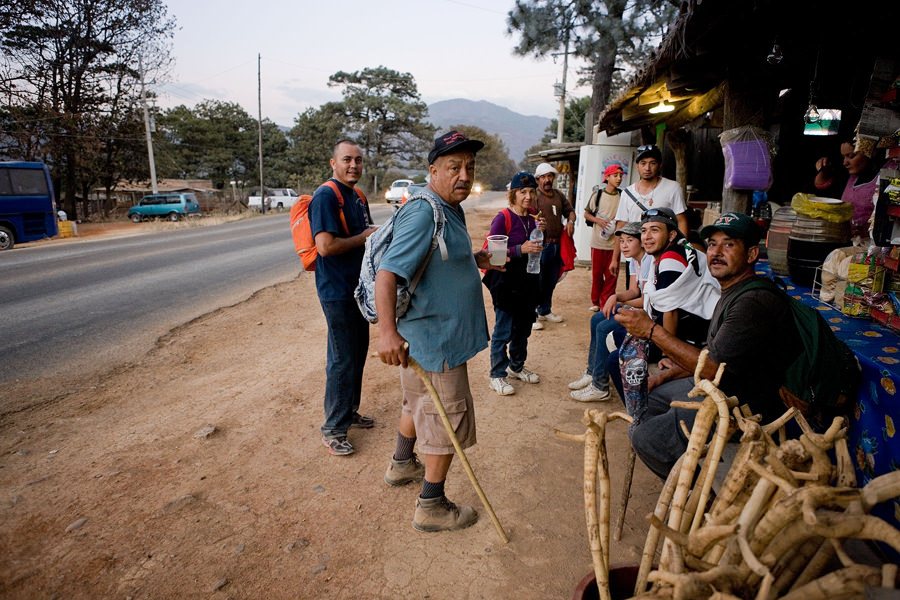
-
Iwan Baan, how many times have you been on the Ruta del Peregrino now?
I’ve been there four times, three times during the pilgrimage and once inbetween. The first time was only for a week around Easter, 2010. Then I went again in October, 2010, to photograph HHF’s project, and again in 2011 at Easter. My latest visit was just recently, at Easter 2012, to visit the lookout tower of Christ & Gantenbein which has meanwhile been finished.
The Ruta del Pelegrino seems to be somewhat difficult to reach. How do you get there?
You fly to Guadalajara, and from there it’s about three hours by car to Ameca. You drive for hours through nothingness and suddenly you’re in a great traffic jam with all the tour buses and pickup trucks, and everything is full of dust. It’s like a great festival – people come from all over Mexico, and many travel these distances along with their entire families.
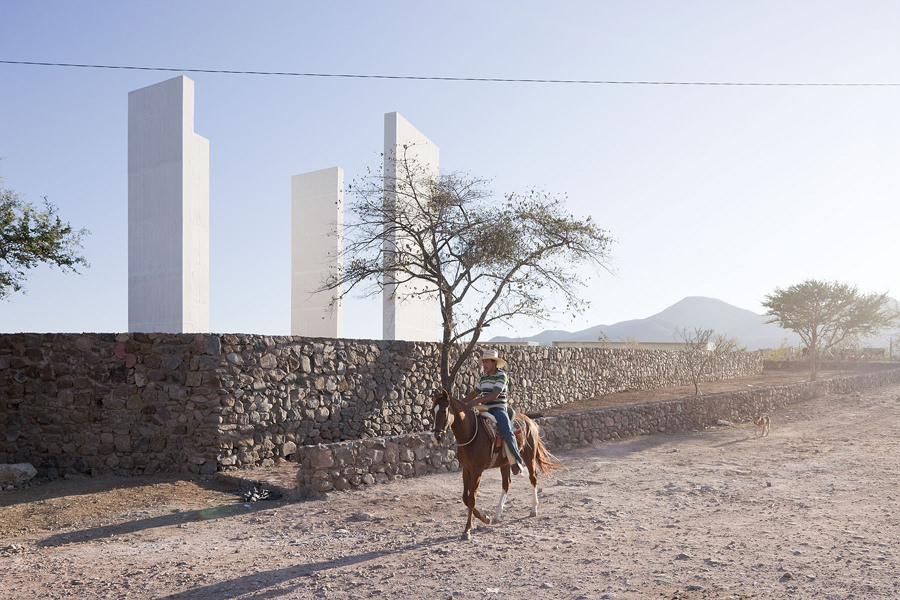
Dellekamp Arquitectos designed Gratitude Open Chapel, in collaboration with architect Tatiana Bilbao, seen over the symbolic “Wall of Promises” that surrounds it. Pilgrims encounter the chapel near the beginning of the route, near the town of Lagunillas in Jalisco, Mexico.
-
Gratitude Open Chapel is designed as an enigmatic structure of “gratitude and self-reflection”.
»People there don’t challenge the buildings. It’s more that they just wonder what they are supposed to do with these structures, because they don’t know.«
-
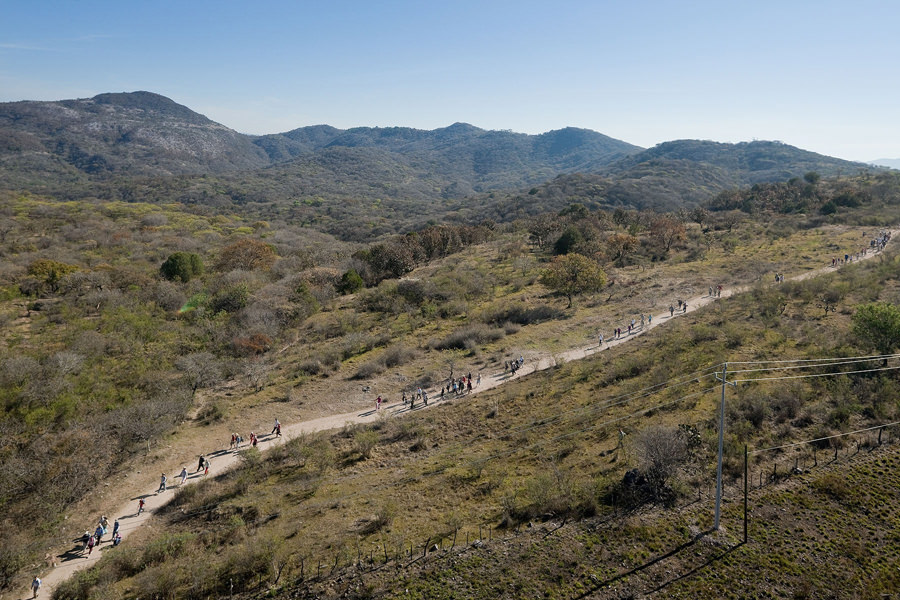
Two million people seems like a lot to me, especially if I imagine them spread over such a short distance.Not everyone does the whole route. Many just drive to a few points that are reachable by car, and not everyone travels at the same time. That’s how the pilgrims spread out over the sites, and even at Easter – when the pilgrimage reaches its climax there are some quiet moments along the route. In Talpa de Allende, where everyone gathers in the square in front of the church, of course it seems rather like a huge and swarming folk festival.
In the pictures it often looks like a long trail of ants.Yes, that is true in many places. Where the trail is narrow, a lot of queues build up, especially in the mornings and evenings. By day it’s often very hot, up to over 30 degrees Celsius, so many travel only at night or by twilight. By day they look for shady places, to sleep or just to rest.
Did you go on foot as well?No. Of course I walked a lot around and in between single pavilions, but I never did the complete route. I used a car or a helicopter. In fact, I mostly used everything but my feet.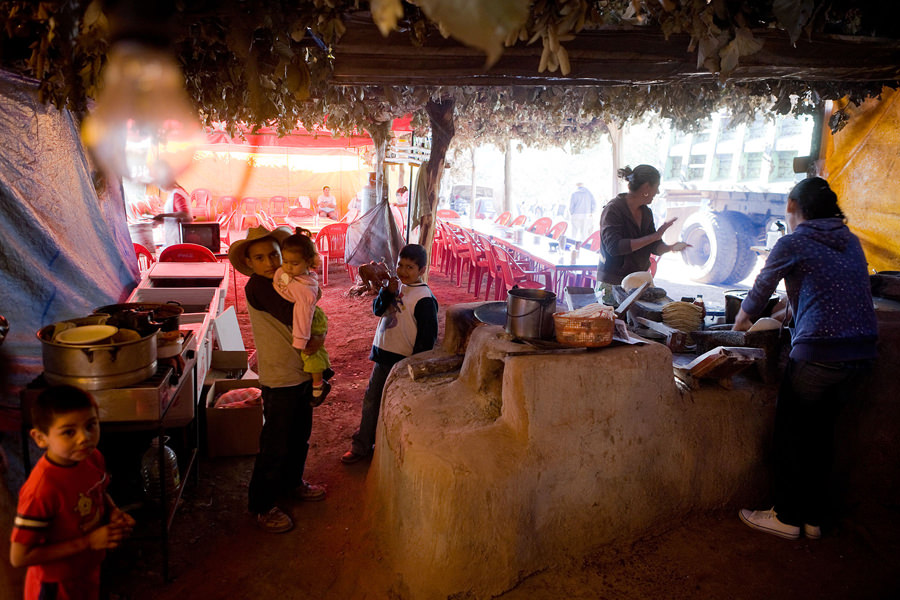
-
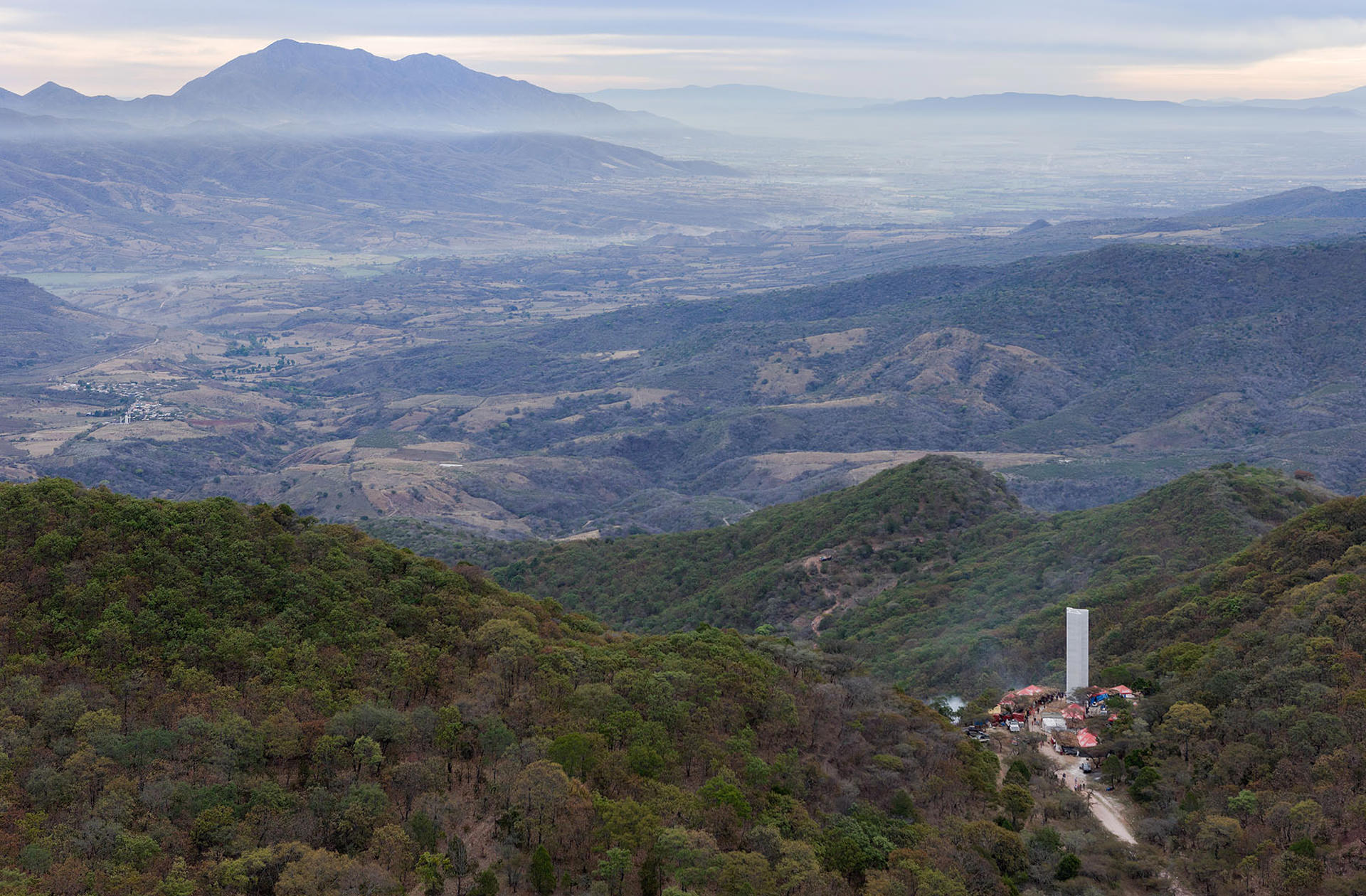
Some of the new structures are within sight of each other along the route, like the Gratitude Open Chapel which can be seen as a small white spot in the distance (in the background to the left) from the Lookout Point designed by Swiss architects Christ & Gantenbein.
-
Are the buildings situated on hills so that one can orient oneself using them as landmarks? Are they a kind of guidance system along the route?Some are within sight of each other. If you stand on HHF’s spiral, you can see Elemental’s viewing point. They are opposite each other, but on two different hills, and the walk on foot between them is really long. Also, from Christ & Gantenbein’s tower you can see a tiny white dot in the distance: that’s a spire of the Open Chapel by Derek Dellekamp and Tatiana Bilbao and on the other side, far, far away in the distance, you can see Ai Weiwei’s structure. The buildings are far in between, but they if you look very, very closely they do become some kind of marking of the landscape.So how do people find the buildings?Some are built right on the route, so you can’t miss them; for example, Elemental’s bent concrete cuboid is a very lively spot. It’s up on a hill, and inside the building you can sit in the shade, rest, and admire the view. Others are set a little further from the route, like Dellekamp’s white concrete halo. But all of the structures become a sort of beacon in the landscape. People gather around them, the Coca Cola-stalls set up shop just next to them and they become resting places along the route.
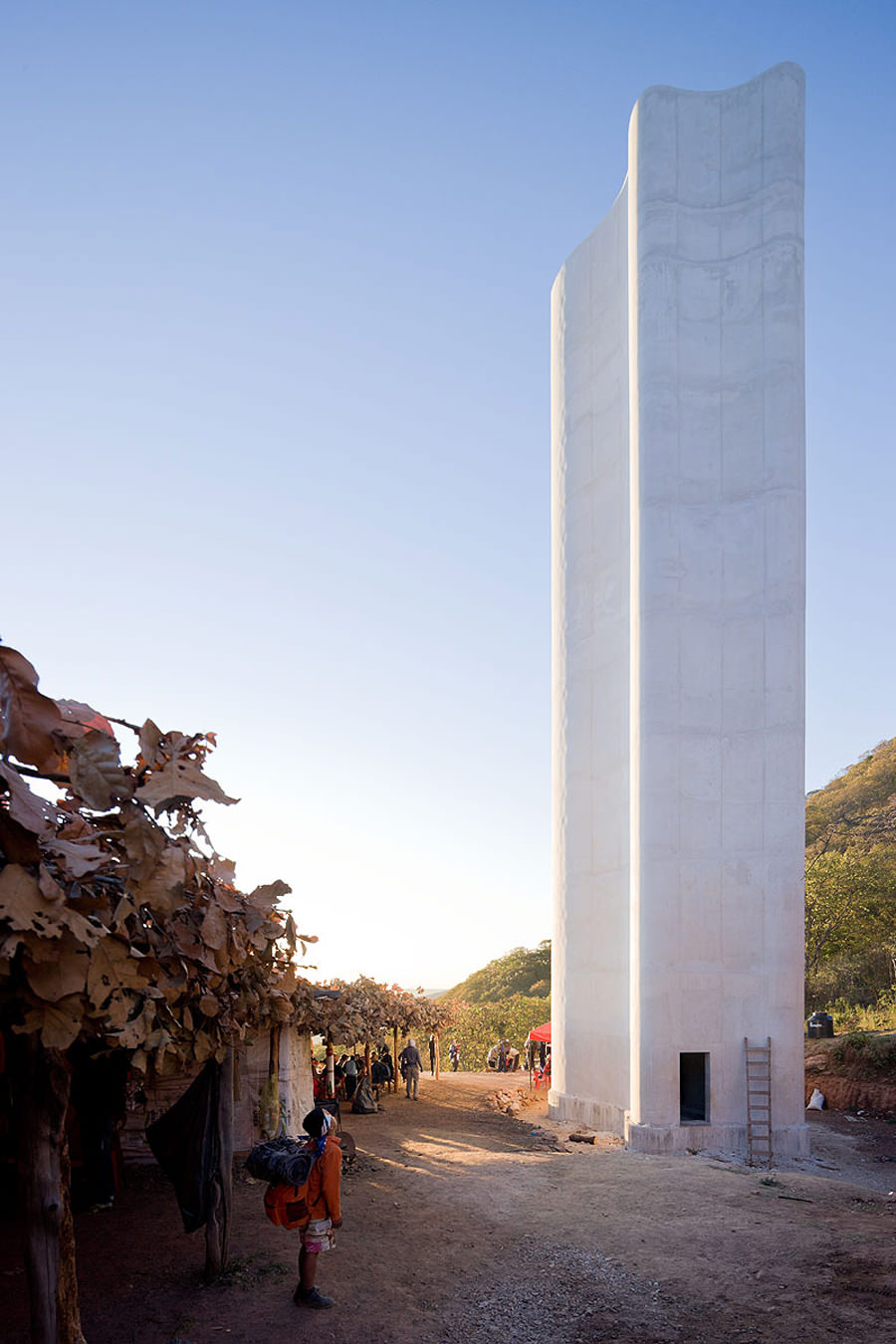
Christ & Gantenbein Architekten’s Lookout Point is constructed from nine prefabricated concrete elements. Visitors can enter the empty space inside and gaze up at a telescopic view of the Mexican sky.
-
How do the pilgrims react to the new buildings?
In different ways. The buildings aren’t marked yet, they are puzzling beacons in the landscape. The concrete halo, for example, is very irritating. Those who find it don’t know what to make of it. So a lot of them look for signs with an explanation or instructions for its use. But there aren’t any except for a leaflet by the organisation which describes the pavilions and what they do.
But for instance Elemental’s bent concrete lookout or HHF’s spiral are quite different. They are big sculptures that you can see from far away, and where you can enjoy a wonderful panorama. There, people immediately know what to do – they sit in the shade, they chat and drink, the children run around, and so on. Most of the structures also become beacons in the landscape and meeting points because people set up their small restaurants around them. And, of course, they use the buildings as a template to spray their names and the date of their pilgrimage on it.
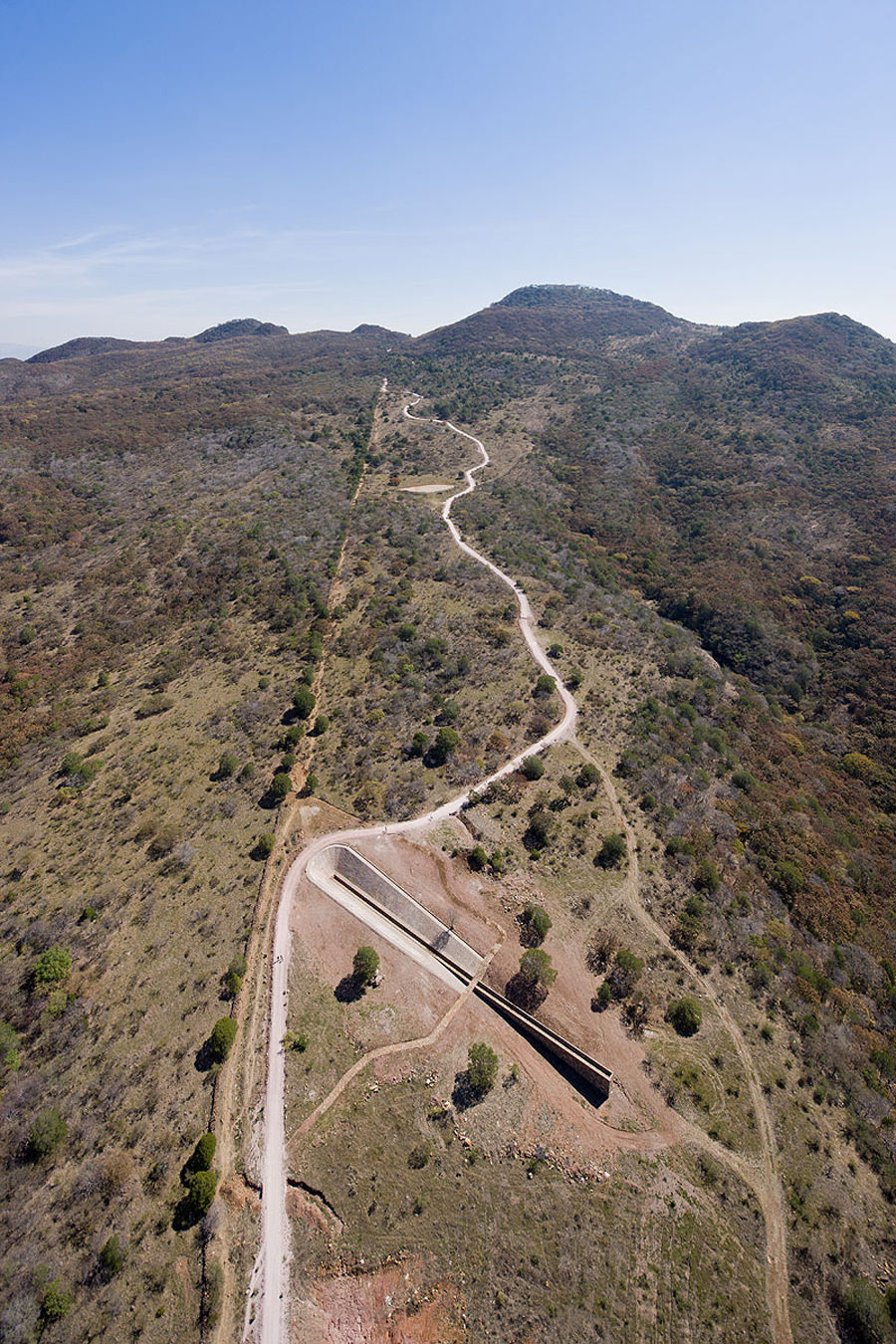
The Sanctuary, designed by artist Ai Weiwei, rises from the landscape.
-
Ai Weiwei’s sculpture provides a beautiful viewing platform to the Jalisco Mountains in the distance.
-
They spray their names on them?At first I completely didn’t understand what was going on. Many pilgrims carry spray cans with them! To spray their names everywhere, marking where they’ve been: on walls, stones, houses, trees, even on churches – and likewise on the new buildings. The whole route looks like a graffiti trail. Some architects got angry about this. But ultimately, some of the buildings are very unfinished, very raw structures. People make this new architecture their own, they adopt it by spraying their names over them.Are there also religious rituals along the route?Yes, of course. When a relative dies, many people travel the whole trail with a cross or a memento, such as a photo or even an urn with the ashes of the deceased. I′m not sure whether the graffiti isn’t also something religious.
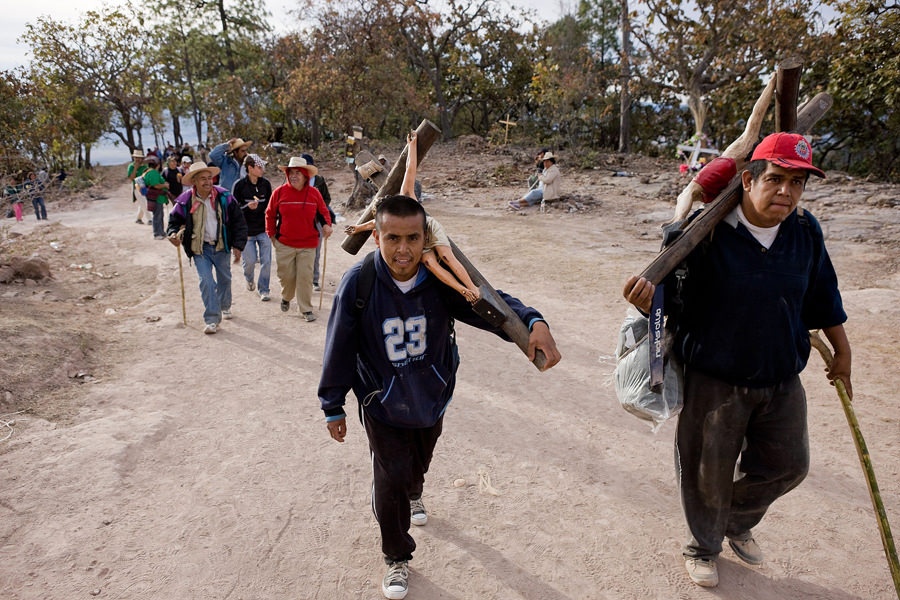
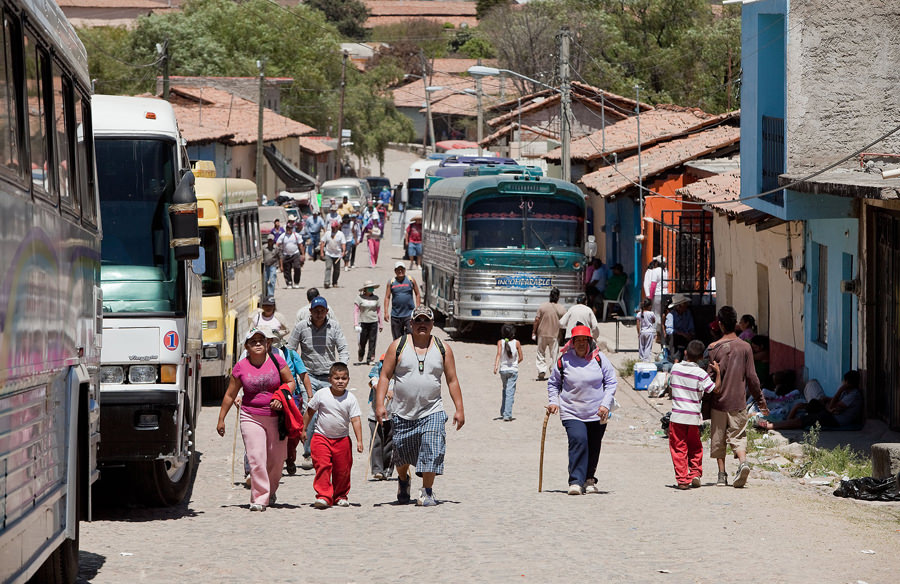
-
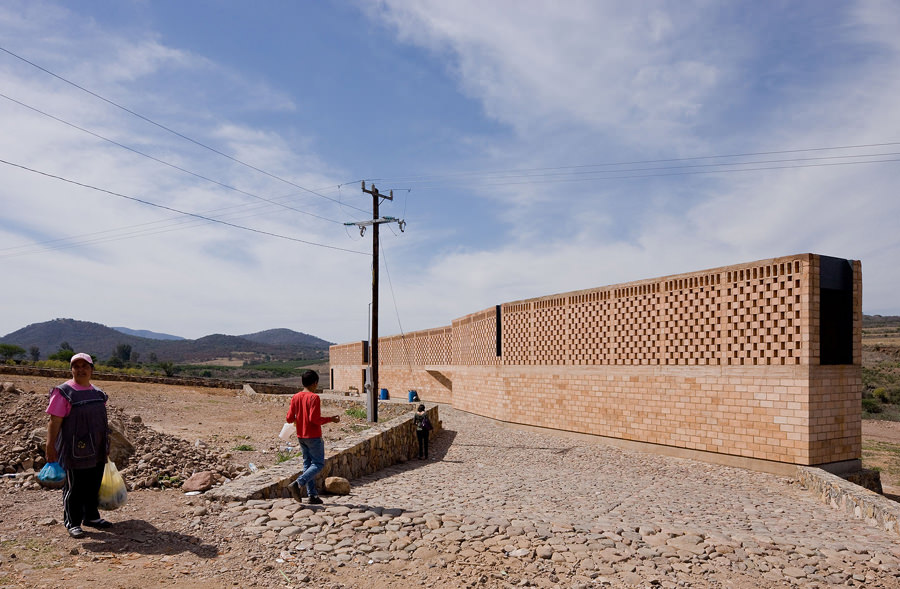
These shelters by Mexican studio Luis Aldrete Arquitectos are designed for pilgrims to spend the night in. Their latticed surfaces, built of adobe bricks, will eventually be overgrown with vines.
How can we imagine the sound of the place? Is it like a quiet walk in nature or a loud and cheerful festival?All the photos with bands, trumpeters, and guitar players are from Talpa de Allende. It’s really loud on the big square. It’s always full of people. There you can see the difference between those who just want to have fun and those who take it seriously. Some go the last few meters to the Virgin on their knees, and others do the whole route barefoot. Others just make noise, sing, and chatter; there are children running about and playing among them, and you can even get pony rides.What was it like when you were there in October 2010?It was quite different, almost unbelievable. We were there completely alone! At Easter it’s this enormous folk festival and in October we were alone with the cows and stars. The idea of the project is for it to also attract tourists other than the pilgrims. At present so many people come at Easter and for the rest of the year the structures are empty. Then, they are only a religious space for cows. When no pilgrims are there – eleven months of the year – mainly cows occupy the structure, they obviously also find the shade very attractive.What do people say about the architecture? Is there criticism that the buildings don’t fit into the landscape, that they are too modern?At least I haven’t heard that. I believe it’s all a question of attitude. People there don’t challenge the buildings. It’s more that they just wonder what they are supposed to do with these structures, because they don’t know. But I also think that the buildings in their own way really fit well into the landscape.
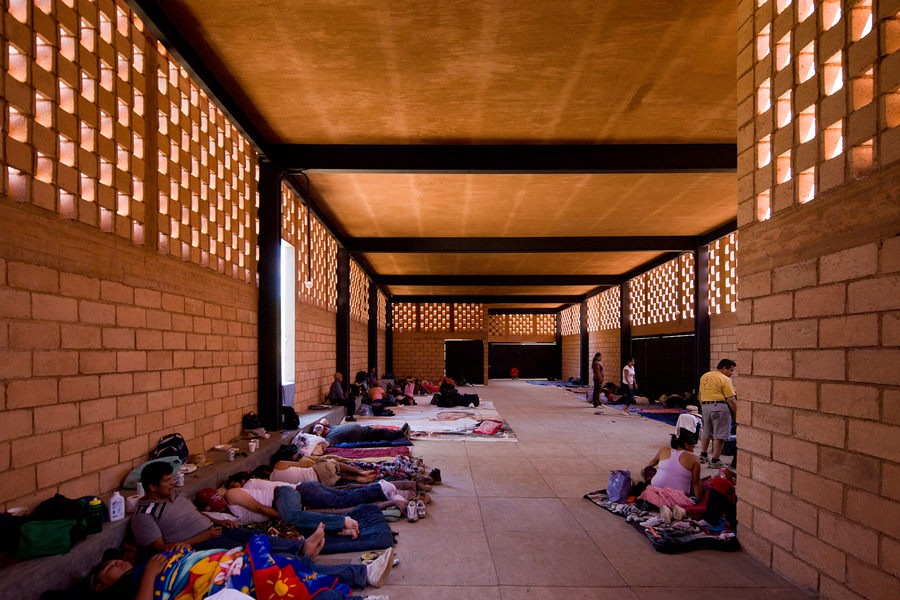
-
Swiss studio HHF Architects designed the concrete Lookout Point, which was completed in 2011.
-
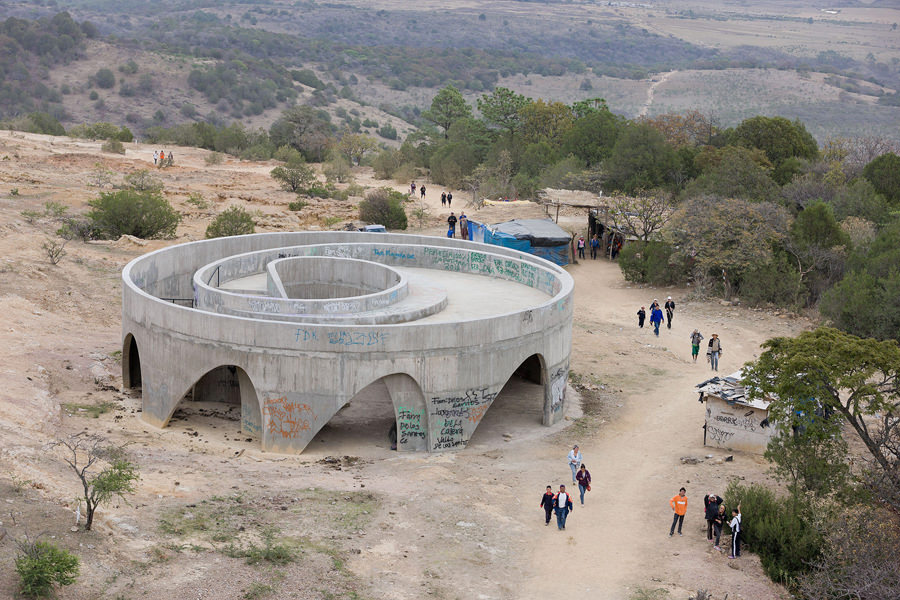
»No, I won’t go on foot, and I won’t carry a cross. I have my camera with me, and that’s enough – that’s my cross.«
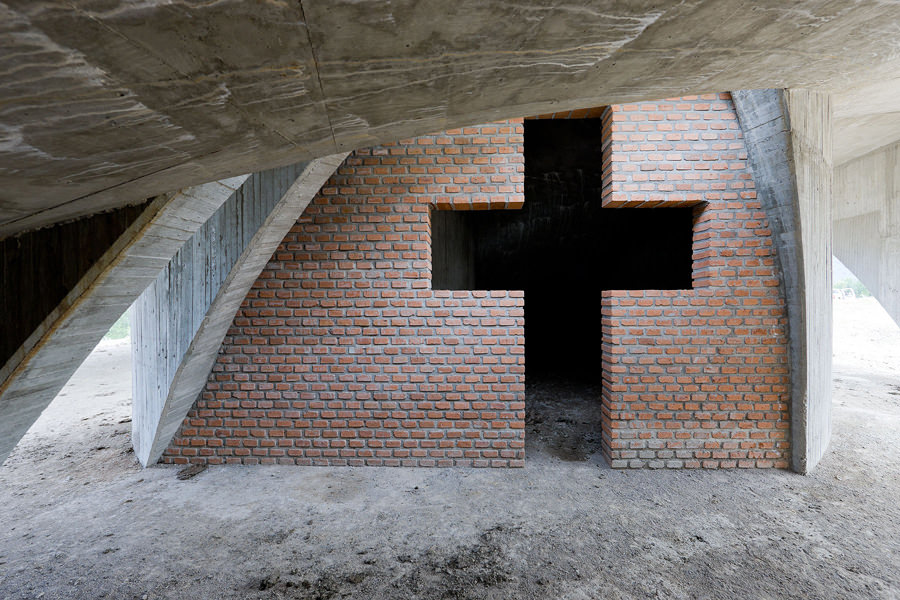
Swiss studio HHF Architects designed the concrete Lookout Point, completed in 2011. It’s complex, spiraling structure, is conceived as an additional looped path within the pilgrims’ journey.
-
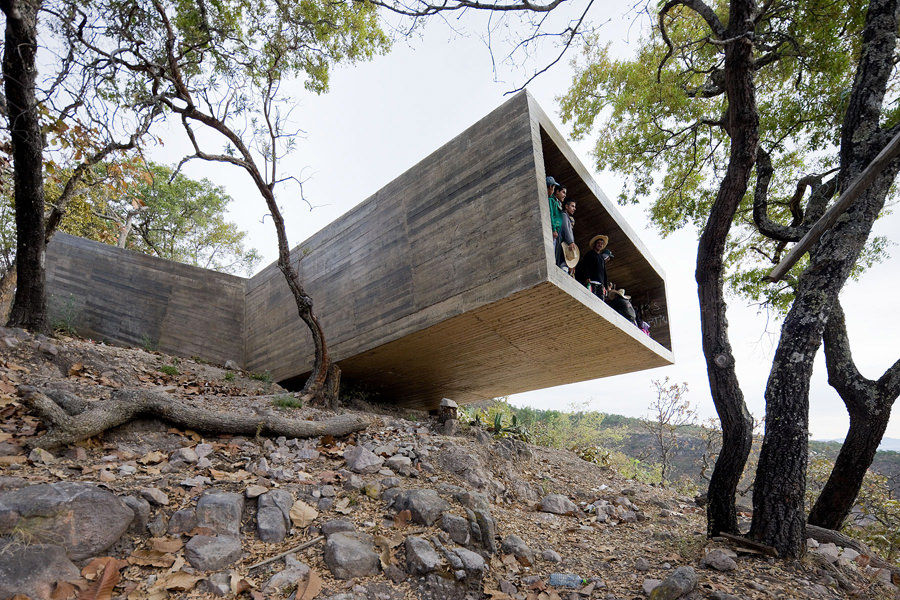
Half-balanced on a hillside near the Las Cruces way marker, Crosses Lookout Point is a concrete pavilion by Chilean architects Elemental.
-
»I’m not sure whether the graffiti isn’t also something religious.«
-
Do you think the idea of more general tourism along the route can work?It’s an interesting idea. The countryside is really very beautiful, and in the autumn even more spectacular, when everything is green and blooming and not so dry and dusty as it is at Easter. On the other hand there is practically no infrastructure; no hotels, hardly any restaurants. There are a few haciendas where one can stay overnight, but otherwise the route is only comfortable for genuine camping enthusiasts. But who knows? Maybe it will work.Is this great communal experience infectious? Will you travel the actual route next time and perhaps even go barefoot?No. I’ll take the helicopter again. That is, if we can get a better one than last time. In 2010 ours came from Guadalajara, covered in oil, and I asked the pilot whether everything was in order. He said he just had to see to a few things, but when after four hours he was still messing around with the rotors, I said no problem, I don’t need the helicopter any more. But no, I won’t go on foot, and I won’t carry a cross. I have my camera with me, and that’s enough – that’s my cross. (laughs)

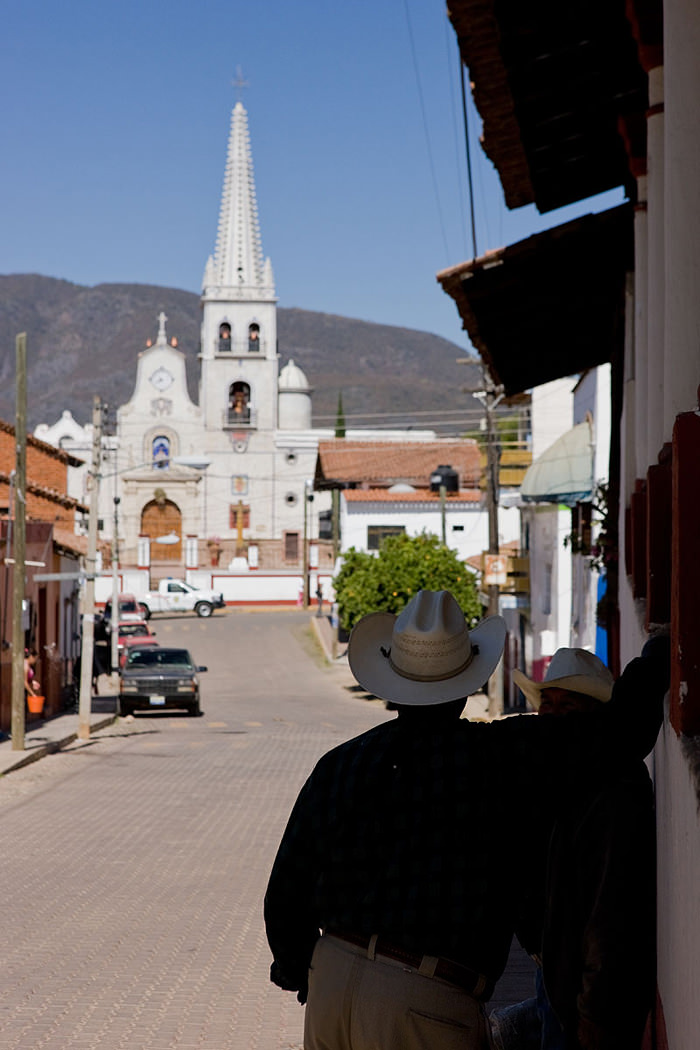
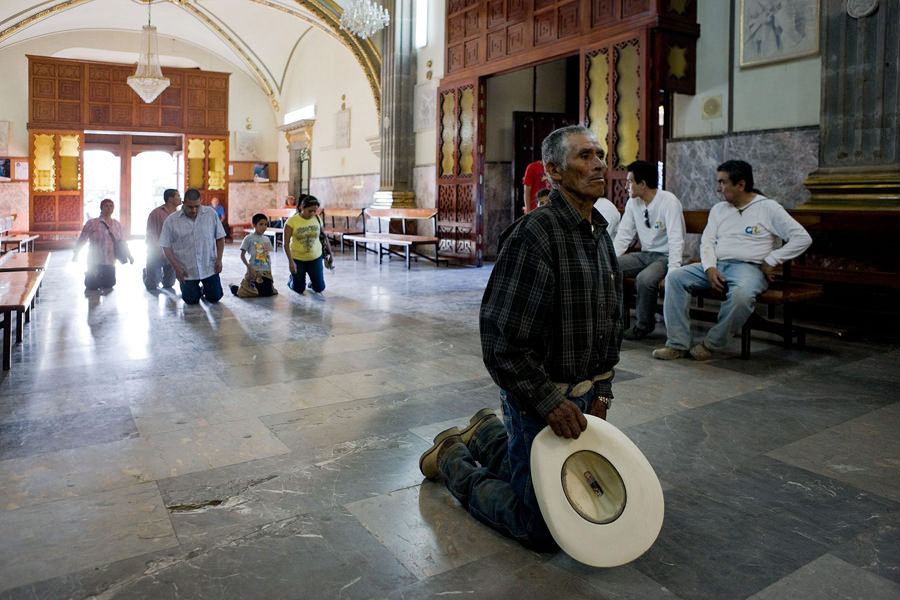
The pilgrim’s destination: The old church in Talpa de Allende where some people kneel in front of the statue of the Holy Virigin of Talpa.
-
Search
-
FIND PRODUCTS
PRODUCT GROUP
- Building Materials
- Building Panels
- Building technology
- Façade
- Fittings
- Heating, Cooling, Ventilation
- Interior
- Roof
- Sanitary facilities
MANUFACTURER
- 3A Composites
- Alape
- Armstrong
- Caparol
- Eternit
- FSB
- Gira
- Hagemeister
- JUNG
- Kaldewei
- Lamberts
- Leicht
- Solarlux
- Steininger Designers
- Stiebel Eltron
- Velux
- Warema
- Wilkhahn
-
Follow Us
Tumblr
New and existing Tumblr users can connect with uncube and share our visual diary.
»I hate vacations. If you can build buildings, why sit on the beach?«
Philip Johnson
Keyboard Shortcuts
- Supermenu
- Skip Articles
- Turn Pages
- Contents



